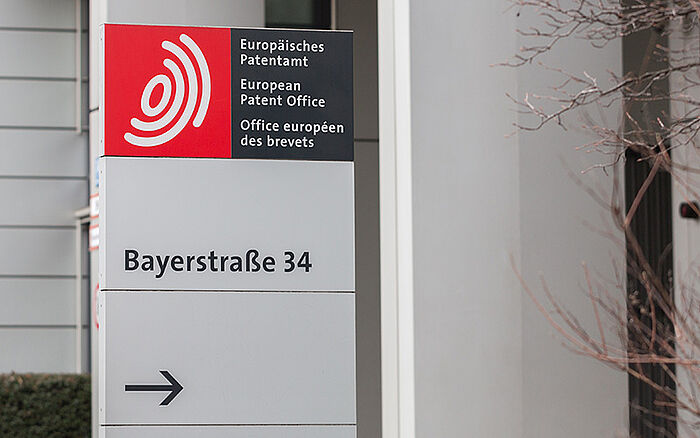
IP briefs: Abolition of the EPC's "10-day rule"
For the Intellectual Property (IP) system to function predictably and consistently, regulations must be set in stone. Yet that stone can still be reshaped as needed. Much of the bedrock supporting today's patenting operations was laid down at a time when procedures relied upon physical documents and analog methods. In our current digitalized workspace, such vestiges are fast becoming anachronistic, and offices are progressively taking action to address holdovers from the not-too-distant past.
Hence, the longstanding European Patent Office (EPO) practice under which notifications are deemed to have been delivered to the addressee on the 10th day following the date of the document was abolished for all official communications issued on or after November 1, 2023.
That being so, the change does not apply retroactively, meaning documents sent before the changeover are not affected.
What was the "10-day rule?"
According to the previous wording of Rule 126(2) of the European Patent Convention (EPC), it was assumed that documents sent by the EPO were received by the addressee on the 10th day following the date the document was entrusted to a postal service. Thus, to ensure printed documents showed the day of handover, EPO letters were post-dated as a matter of course.
As an example of how this works for documents issued before November 1, 2023, let us consider the deadline for responding to an examination report dated October 1, 2023. Under the prior system, the four-month period the applicant has to reply to the notification ends on February 11, 2024. However, this is a Sunday, so the deadline is extended to the next working day: February 12, 2024, a Monday.
Previous calculation: October 1, 2023 + 10 days + four months + extension to the next working day under Rule 134(1) EPC = February 12, 2024.

The "10-day rule" was designed to factor in the unavoidable interval when physically delivering EPO documents. The standard also attempted to account for additional short delays, whether due to industrial action, adverse weather, seasonal demand or human error. (Image source: iStock. Author: Christian Ader)
What has changed?
All documents issued by the EPO on or after November 1, 2023, are deemed received on the date of the document.
For example, the four-month deadline for responding to an examination report dated November 2, 2023, will be March 2, 2024, (a Saturday), and carried forward to the next working day, March 4, 2024, (a Monday).
New calculation: November 2, 2023 + 4 months + extension to the next working day under Rule 134(1) EPC = March 4, 2024.
What is the reason?
Nearly all documents the office issues are sent electronically via the EPO Mailbox. Established in 2011, this service has demonstrated its reliability and capacity, making notification by traditional "snail mail" a redundancy. Thus, the revision of Rule 126(2) EPC simply reflects the prevalence of instantaneous communication and its immunity to postal delays.
Fiction of notification
Regarding postal notification, amended Rule 126(2) EPC replaces the word "letter" with "document." This bears out the fact that the date printed on the document itself is the only one relevant for notification fiction; any date that may be printed on the envelope by a courier service does not apply.
The same logic governs electronic notification under revised Rule 127(2) EPC. That is to say, dispatch will not take place ahead of the document's date. In the unlikely event that a recipient is able to read a document ahead of this time, Rule 127(2) EPC still defines the affixed date as the appropriate notification fiction.

The abolition of the "10-day rule" further incentivizes the use of the EPO Mailbox as an instant and dependable delivery method. Physical copies are still sent, but patent applicants are advised to check their electronic inboxes regularly to ensure they can respond to office actions in due time.
If a party disputes a notification, amended Rules 126(2) and 127(2) EPC outline the EPO's burden of proof. The office is obliged to provide evidence of the document's delivery and the corresponding date.
Providing the EPO is not able to corroborate any document delivery, the notification fiction does not apply. Consequently, no response period will be considered to have begun. In these events, documents will be reissued with a revised date.
Late receipt: What is the new "seven-day rule?"
The calculation of the seven-day rule is different from that of the 10-day rule.
For example, the EPO invites an applicant to remedy specified defects in his European Patent application within two months via a letter dated November 1, 2023. The letter was dispatched by the EPO on November 1, 2023. When does the response period expire if the applicant can show that he received the letter on November 11, 2023?
Answer: November 11, 2023, is 10 days after dispatch; therefore, the seven-day rule of the amended Rule 126(2) EPC applies. The letter is received three days too late (10 - 7 = 3 days). The period expires on November 1, 2023 + two months (Rule 131(4) EPC) = January 1, 2024. As before, this is a holiday, but Rule 134(1) EPC does not apply before the addition of the extra day(s). It follows then that adding three extra days (Rule 126(2) EPC) = January 4, 2024 (a Thursday).
Note: In the event the deadline of January 4, 2024, were a closed day (a Saturday or Sunday), the period would have been extended to the first available working day (Monday) pursuant to Rule 134(1) EPC.
General rule: Any additional days are added to the last day of the calculation, and only if the new end date is a closed day will it be extended to the next working day pursuant to Rule 134(1) EPC.

Whereas the "10-day rule" was an assumption of receipt, the "seven-day rule" is an approach to extending deadlines in cases of slow postage. One week is allowed for expected delivery, with every day of delay thereafter being added to the period allowed for responses.
Which documents are affected?
The amended Rule 126(2) EPC impacts the response periods for, among others:
- Office actions (four-six months)
- Formal deficiencies (generally two months)
- Appeals (two-four months)
- Requests for further processing (two months)
- Rule 161-162 EPC communications (six months)
- Claims fee payments in cases of non-unity (two months)
Which communications are not affected?
The amended Rule 126(2) EPC has no impact on, among others:
- Paying filing and search fees (one month)
- Requesting an examination and paying fees following publication of the search report in the European Patent Bulletin (EPB) (six months)
- The examination period of Rule 70a(2) and Rule 39(1) EPC (six months)
- The opposition period beginning with the publication of the intention to grant in the EPB (nine months)
- Euro-Patent Cooperation Treaty (PCT) entry (31 months)
This change to EPO regulations has just entered into effect, so it is vital for patent applicants and their service providers to be aware of the effect on deadlines. We are likely to see many more procedural revisions as modernization efforts continue at the EPO and beyond. The IP system advances at a slow but unflagging pace, making it a dire mistake to assume things as they are now are things as they will always be.
For updates on IP legislation and jurisdiction procedures, be sure to follow Dennemeyer's IP briefs.
Filed in

地球の天然資源に対する高まるプレッシャーは、農業がより効率的で適応力のある必要を意味しており、知的財産権はこの目標を達成する上で重要な役割を果たすでしょう。



